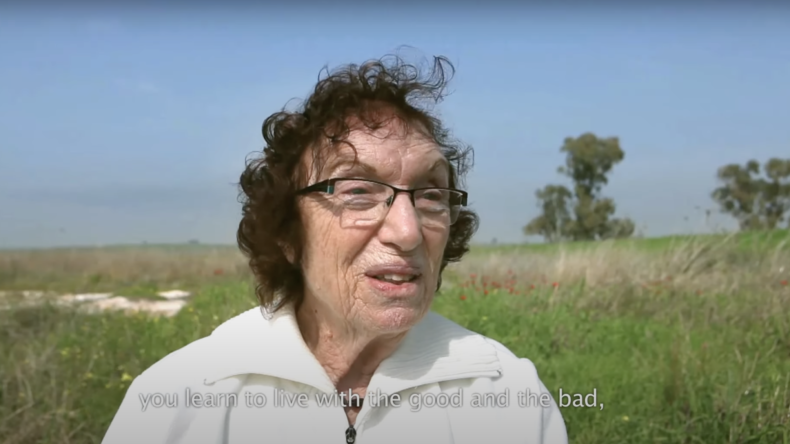ART – 95% heaven and 5% hell, the word to the women of kibbutz Be’eri
 The junction of Yad Mordechai, 4 km far from the border of the Gaza Strip, was where the artist Tamar Nissim started feeling scared. “It was 2017, and I was travelling from Tel Aviv to Be’eri to create a video installation for the kibbutz. For me that junction was the beginning of the danger. If missiles had been launched, I would have had 15 seconds to find a shelter. That was a frightening realization.”
The junction of Yad Mordechai, 4 km far from the border of the Gaza Strip, was where the artist Tamar Nissim started feeling scared. “It was 2017, and I was travelling from Tel Aviv to Be’eri to create a video installation for the kibbutz. For me that junction was the beginning of the danger. If missiles had been launched, I would have had 15 seconds to find a shelter. That was a frightening realization.”
Her artistic project, which gives some women from Be’eri the chance to talk about their lives under the constant threat of being attacked, was born after the war in Gaza in 2014, and was modelled on Nissim’s sensations. “I thought: if I am so scared, what are they thinking? Do they want to leave after all the alerts, the rockets, the danger of the terrorists’ tunnels? Are they scared to raise their children over there?” But during a recent interview with Pagine Ebraiche, she stated that the answers were surprising.
The nine women she interviewed did feel scared, “but they rationalized everything, and they defended their idea of community. They believed in their narration, in the deeply Israeli idea that we will not leave our homes ever again.” One of them would tell Nassim that Be’eri is “one of the best places in the world to raise children.” Eventually, this sentence became the title of her work. “In those words lay their conviction, as well as my doubt, my intent to highlight the contradiction of their existence.”
Nowadays, that work has a different meaning to Nassim, “it is the representation of the resilience those women, aged between 18 and 84, have. In their voices there is the strength of determination to face anything.” The work was on display at the MAXXI, National Museum of 21st Century Art in Rome, as part of an exhibition that has been brought to Italy by the Israeli Embassy. “Ninety-five percent heaven, five percent hell” was the title of the exhibition, and it refers to what life is like near the Gaza Strip. Five works were on display, and they are all videos focusing on the choice to live on the border with the Palestinian enclave. The entire project was ideated by Ziva Jelin and Sofie Berzon MacKie’s and it was recently brought to the Be’eri Gallery, which the two woman ran and was set on fire by Hamas terrorists on October 7. That day, they also killed one of the women Nassim had interviewed, Tami Suchman.
“Now my call is to listen to them and to focus on their personalities,” the artist explains. The images represent their faces, but also the calm and the beauty of the places surrounding the kibbutz. Nissim does not know whether the survivors still believe in what they stated in her videos. “However, the way they faced precariousness and the danger of the conflict back then is speaking to the present. It makes us think about how to face today the tragedy happened on October 7, our relationship with our neighbors, the sense of the war.”
Translated by Francesca Pischedda and revised by Annadora Zuanel, students at the Advanced School for Interpreters and Translators of the University of Trieste, interns at the newspaper office of the Union of the Italian Jewish Communities – Pagine Ebraiche.
